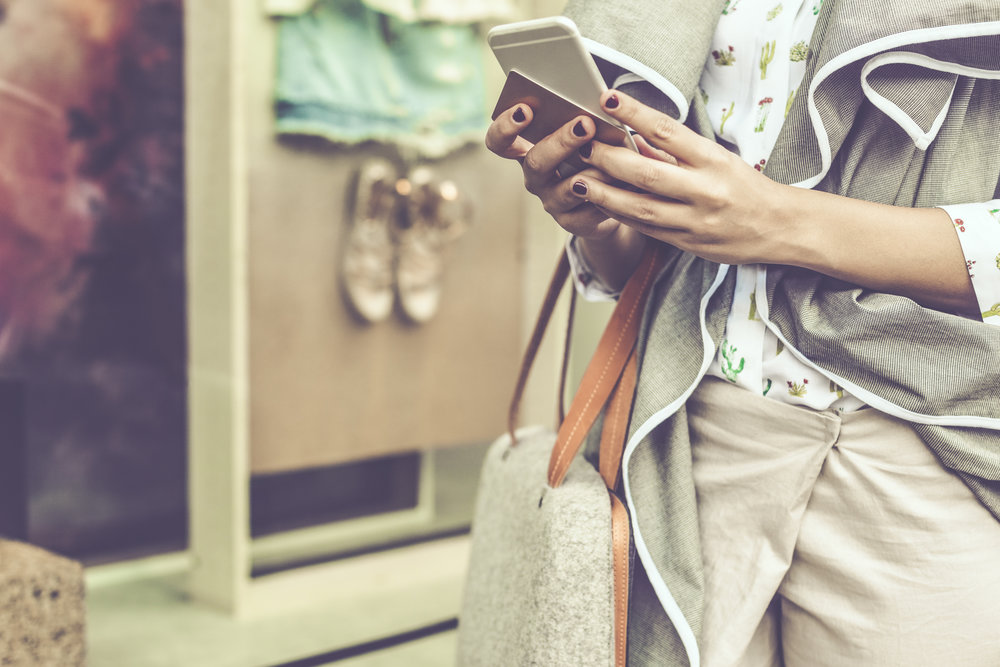Wasp Barcode Technologies: The Barcode Solution People
2017's Emerigng and Under-the-Radar Retail Trends

The year 2017 is an exciting time to be alive, and believe it or not, the world of retail is no exception. Retail is an ever-changing space, susceptible to changes in technology, popular culture, and the ever-volatile economy—and because of that, there are always new trends on the horizon.
Many experts believe we are on the cusp of great changes in retail, which makes 2017 a great time to check out what is trending and may become the norm going forward.
Some of the retail trends for this year are fairly obvious—they’re based on the advent of mobile devices, cloud computing, and the continued domination of giants like Amazon. Others are more “under-the-radar,” and they are as varied as the “Menaissance” and the surprising revival of small business in general. We’ll discuss them all here.
First, some of the more dominant retail trends of 2017, according to a variety of experts in the space.
The continued rise of mobile
A decade ago, mobile phones were for making phone calls, sending texts and checking email. Now they are in many ways the future of retail, not to mention the future of communication, identification and nearly every other aspect of modern life.
What can’t mobile do in this space? Retailers of all sizes should at least focus on providing a robust mobile retail experience, so shoppers can make purchases from their inventory on a personal device seamlessly, wherever and whenever. That includes at home, in bed, as well in the store—since many people visit a physical store to try out an item and then buy it elsewhere online, some businesses are pursuing platforms that allow users to make purchases from their phone and walk out the door, rather than making them wait to see a cashier. Mobile will become part of a smooth, integrated shopping experience.
There’s also mobile marketing, since mobile now represents
over two-thirds of all digital media time—making it the primary focus for marketers, even with a multi-platform strategy. Mobile shopping is now a billion dollar industry, and so that’s where the bulk of marketing, advertising and development dollars will be spent.
[Tweet "Mobile now represents over two-thirds of all digital media time."]
Changing the way brick-and-mortar stores function entirely
The future of brick-and-mortar stores is in flux, but it’s not as dire as some might have predicted a few years ago. Rather than the phasing out of brick-and-mortar locations altogether, brands find that using physical spaces in new and innovative ways will help create a “sticky” experience for shoppers, who still appreciate the real-life acts of window shopping, trying items on, socializing, talking with local experts, and everything else they can’t get from online shopping alone.

Expect physical stores to
take on a number of new roles, depending on the type of business. Some will be showrooms, where customers can try on items and then have them shipped to their home later that day from another location. Others will provide “on-brand” experiences that build loyalty and give customers more reasons to buy that company’s products in the future, such as salons or barbershops. They’ll be a place where “transaction meets fulfillment.”
Voice user interfaces
VUI is changing the way we interact with the internet—
search, for example, will be altered by the use of virtual assistant interfaces like Siri, Alexa, Cortana et al. Retail will be affected by them as well: Whether we’re in the car, in the kitchen, or walking through a store, we will increasingly be able to interact with these more natural and intuitive ways of engaging with technology.
Agile at scale
It’s the dream of many a business to be both agile and to work at scale. To be agile is to be lean, and to scale your work is usually to leave behind agility in the name of larger, more complex practices. How to combine both?
[su_divider top="no" size="2"]
[su_divider top="no" size="2"]
It appears that 2017 is the year that more retailers will look to implement agile, lean thinking
across their business as scale. This will involve the use of automated software to reduce redundant, manual practices, among other techniques. The goal is to increase innovation and responsiveness while maintaining, if not improving, the quality of deliveries.

Price is king
When has shopping not been about price? Selling products for the lowest possible price is hardly a new concept in 2017, but it’s easier than ever for consumers to compare prices of multiple retailers at any one time.
MarketTrack’s Shopper Insight Series Survey says price is by far the most important factor for consumers when deciding when to shop. So even though the default for many online shoppers is simply to check Amazon, they likely won’t stop there. That gives other businesses a window in which to showcase their own low prices, or other perks that may draw customers to their shop instead.
Convenience is key
An “easy online shopping experience” also made MarketTrack’s list of influential factors. We’re seeing an explosion in the “convenience” space in regards to retail. There are the Amazon Dash Buttons, Instacart, VUIs, various food and package delivery services through companies like Uber and Postmates, and many more. There are subscription services that automatically send consumers the freshest, hottest items (sometimes, controversially, whether they expect it or not). However businesses can best move customers over the bump that is “putting an item in the cart” and “actually ordering it,” expect them to continue to move in that direction this year and beyond.
Amazon and other giants continue to consolidate
The first name in online retail—a name that has already come up a few times in this article—is Amazon. There are other major players in the game, such as Wal-Mart, Target, and even China’s Alibaba—but there is no name more culturally and economically relevant than Amazon. Expect the Seattle-based company to continue to innovate in ways that pushes the space forward, from their foray into “bricks-and-clicks” (ironic, considering Amazon is what hastened the demise of many a physical bookstore in its earlier days),
to the use of drones in warehouses and for delivery, to supermarkets without checkout lines, and much more.
Another thing to note is how some businesses, such as solo entrepreneurs, are even migrating to Amazon’s platform to sell their wares. Even businesses that aren’t a part of Amazon are, in effect, becoming a part of Amazon. Is the future of small business simply to be a wing of larger corporations? We’ll take another step towards that reality in 2017.
Under-the-radar trends are a little harder to identify and predict, by their very nature. But here are other ideas floating around the web that may also make major advances starting this year.
The “menaissance”
From a raw numbers standpoint as well as in the popular imagination, shopping was geared towards women. But now men are outspending women, and the menswear market will expand 8.3 percent next year,
according to Ogilvy.
Identifying shopping preferences within households
As businesses get better at analyzing data, which are becoming deeper and more complex than ever, it will be up to businesses to parse through shared shopping carts (as grocery shopping becomes an increasingly shared responsibility) to identify who is buying what and to see who to cater to and how when they come online.
Is small the new big?
In many ways, as noted above, small business is being folded and incorporated into the arms of big business. But demographic shifts (out with the baby boomers, in with millennials and Gen Z) are helping prioritize personalized shopping experiences, which are aided by heightened expectations from wealthy shoppers. Buying in bulk at Costco and Amazon is trendy now, but only small businesses can provide the special services and unique products that the younger generations crave.
It’s shaping up to be another exciting year in retail. Whether these trends end up coming to fruition, exceeding expectations, or falling flat remains to be seen. We’ll check back at the start of 2018 to see what emerged and will continue to drive retail in the years ahead.





